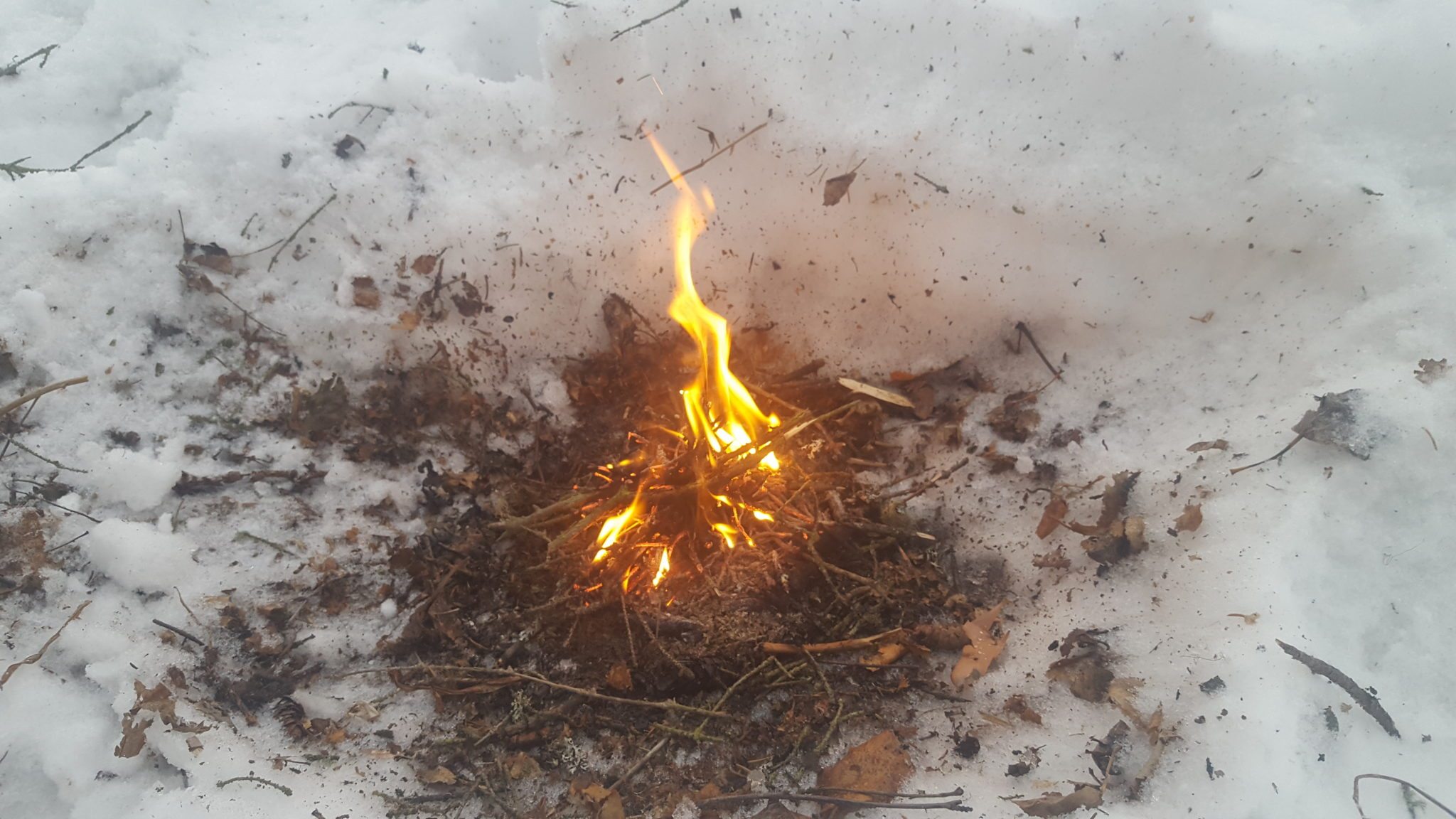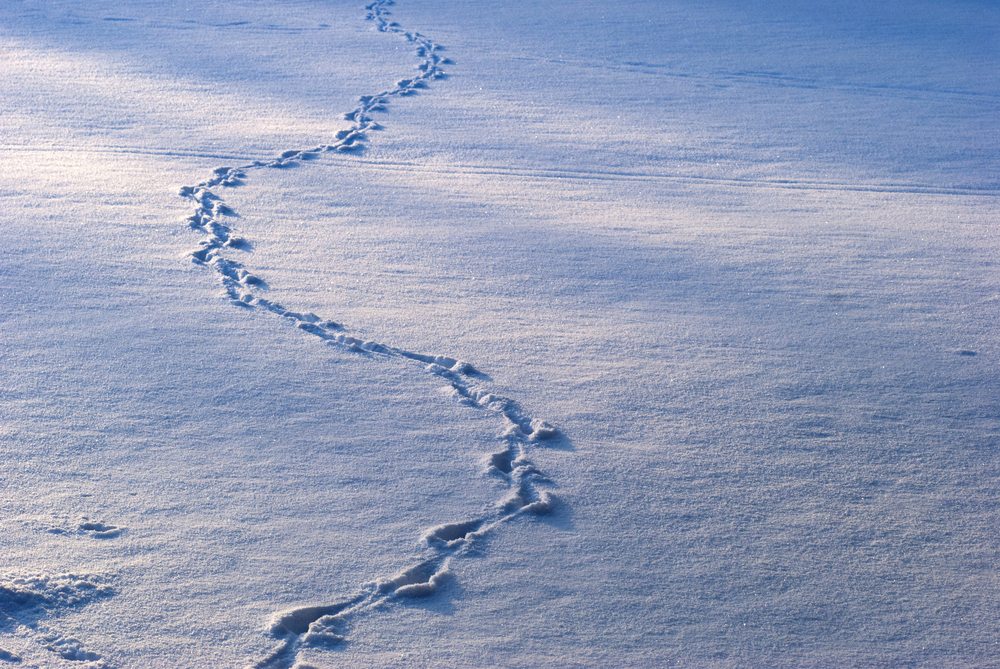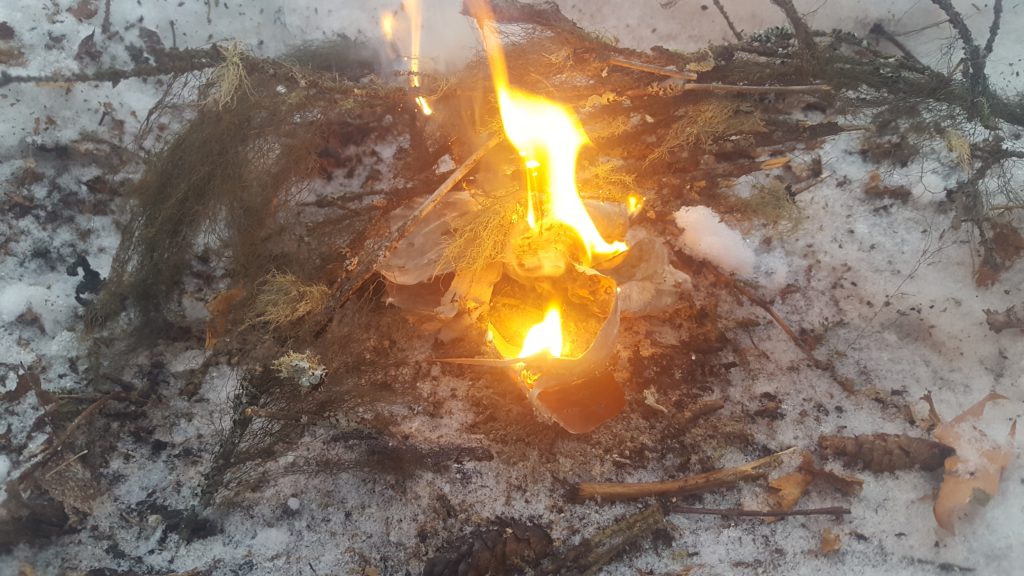One of the worst situations a human being has ever been in is being alone, especially in the arctic wilderness. We are bred and conditioned to want to be near other human beings. It is how our species has survived. Most in the animal kingdom also rely on being in a group to not only survive, but to thrive. When you are together, you all have the ability to pool resources and distribute the work load. When a human being is alone, it is on him/her to do all the work and look after themselves. Now let us press on to the subject at hand.
Surviving alone in any environment is difficult. The worst places you could find yourself needing to survive tend to be where the climate is extreme, such as in the desert or in the arctic climates where subzero temperatures during the day are normal. Here in Alaska, it is normal for the winters to be bitterly cold with snow dropping by the foot within hours. The most important skill you must have would be starting a fire. But you better be very quick and methodical about how you accomplish the task of lighting one and keeping it going.
Fire is one of the greatest things that we as human beings have been able to perfect. Fire in every climate has been a necessity for not only heat but cooking, morale, and signalling. In the arctic however, it is arguably even more important than finding food. Without fire, you could freeze and die and then there is no way you can survive to find food for yourself. So let us look at a few items you will need in order to get your fire started.
- Lighter- Yes, I always advocate carrying a Bic lighter wherever you go. Even if it gets wet, it can still dry out and continue to be used.
- Paper/Birch bark/Moss- This will help get the fire started fast with little effort, but this is not a primary fuel source. It burns hot, but it burns fast.
- Small/medium sticks- This will help give the fire something to burn and keep it going hotter and for a longer amount of time. Collect this from low evergreen branches as they are generally going to be dead and dry. Ripe for the picking.
My first and most important recommendation for you is that you have a generous amount of each of these materials, aside from the lighter. I would argue that having a huge pile of sticks that are about 1/4 inch in diameter is probably the most important. If you can find bigger, take them as well. Get as much and as big as you can get without having to exert yourself. The number one thing to remember about all of these items is the fact that they MUST be dry. Most of the wood that I prefer come from the bottom of evergreen trees. The low branches tend to die off and just hang, ready to be pulled. If they should host some dangling moss, all the better.
Now let us evaluate the ground upon which your fire will take life. My first recommendation is that you find a place that is under a canopy of trees where the snow is neither deep, or able to easily reach. The one thing you must keep in mind is that you will want to have a generous amount of room between the fire and any nearby trees. Make sure any branches above where the fire will be are either pulled down and used as firewood, or high enough as to not pose a threat to starting a wildfire. From here I recommend clearing the snow out of the way, leaving about a square foot of bare ground for the base of the fire. Now you are ready to begin lighting your fire.
I like to begin with a generous bundle of birch bark. I use my lighter to get it started and once it holds a flame, I begin right away laying on layers of birch bark. While throwing in the birch bark, I also mix in moss and small sticks that I have broken up into pieces no longer than four inches. By this time, the fire should be burning nice and hot and you can start laying on a few of the thicker sticks. The important thing at this point is to make sure you don’t smother the fire and restrict its ability to get oxygen. If you can do this, you are set.
Once you get the thicker sticks to catch, you should be good to go. From here, the fire should keep as long as you have fuel to keep it going. Now if you happen to find yourself in a place that has no vegetation whatsoever, you won’t have to worry about getting a fire started anyways and you may want to consider building an igloo instead.
The biggest thing I want everyone to take away from this is that you want to be sure that you have the type of supplies on your person that will keep you from having to rub two sticks together. A Bic lighter has little weight to it, can get soaked, and will still serve you well if you can evaporate all the moisture off of it. Basically, all you need to do is keep the lighter in your pants pocket against your body in order to stay warm.
Even with things like lighters and birch bark, starting a fire in subzero temperatures is not something I would classify as being fun. You are still cold until the fire gets to be a size that you can warm up your whole body. Sleeping with the fire still running is an optimistic thought. Most of the burnable vegetation is going to burn so fast that you are going to spend the whole time fueling the fire.
I want to emphasize the lack of romance and fun in this kind of endeavor. If you should find yourself needing to light a fire in these conditions, things are not looking good. Just remember that the fight is never over and you only fail when you accept failure as an optional outcome. Keep fighting, keep surviving, and never quit.



